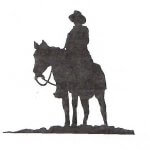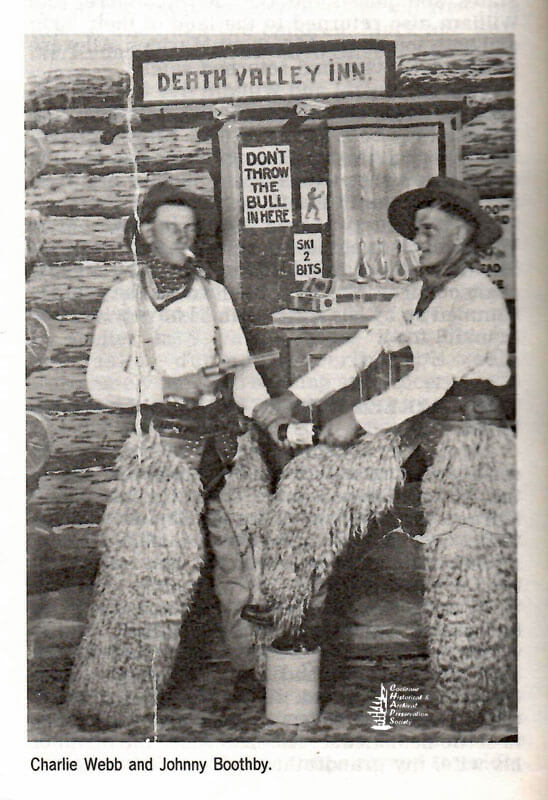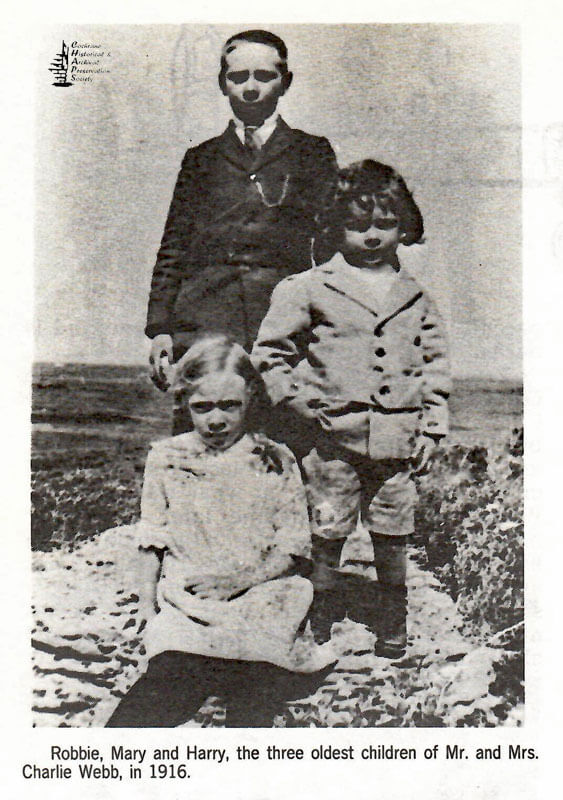by Robbie Webb pg 660 Big Hill Country 1977
My father, Charles Webb, was born in Birmingham, England. He immigrated to Ontario in the 1890s, obtained some schooling there, and learned the blacksmith trade. He followed his trade, working at sawmills and railroad construction, including work on the first rail line in the Crows Nest Pass.
At some time in Father’s career, he went on harvesting excursions to the Dakotas. This is where he met his future wife, Annie Clark, who with her parents had come originally from Devonshire, England. Her parents, the Henry Clarks, later moved from Crystal, North Dakota, to settle near Leduc, Alberta.
After the death of his wife, my grandfather came to live with my parents. He passed away at Cochrane and is buried in the Cochrane Cemetery.
After my parents were married they came to Calgary, about the year 1902, then went to Crossfield, where my father opened a blacksmith shop. I was born in Crossfield in 1906, and a year later my parents took up a homestead on the NW14 22-27-4-5, in what was later the Weedon district. Sometime later my father bought the adjoining quarter to the south, which had been homesteaded by Mr. Timmins. Logs and rough lumber were bought from the Quigley sawmill in the bush about twelve miles northwest, and a house, barn, chicken house, and blacksmith shop were soon built. Water supply was of course essential, and obtaining it proved to be a very arduous task.
Although the land in the Weedon area is generally level, with rich productive soil, it has for many years been nicknamed “The Desert” because of the depth of underground streams and lack of springs. Mr. Hammond hand-dug my folks’ well and obtained a good supply of water at a depth of 110 feet. Well digging was slow hard work, both for the man down the hole and his partner who had to pull up the buckets of dirt. Quite often it was the homesteader’s wife who did that. Cave-ins of the hole had to be prevented with a cribbing of rough lumber or poles.
The Mounties patrolled what was in those years, miles of unfenced land, and periodically rode into the different settlers’ places to get acquainted and to obtain food and lodging. They paid about thirty-five cents for a meal and a dollar for overnight accommodation for themselves and their horses, all by government cheque.
The first few years that my parents were on the farm were very wet. There were lakes and muskegs where now there is solid ground. Grain and potatoes did not mature well, but there was ample prairie wool available to be cut for wintering the livestock. Gradually more ground was broken, the seasons became more frost-free, and good grain was grown. About 1918 my father bought a small threshing machine. It was made in Quebec and built mostly of hardwood and driven by a ten horsepower engine which weighed about a ton.
Each machine was mounted on a running gear and moved around by teams of horses. Many farmers’ crops were threshed by this outfit as it was one of the first in the district. My father used it to do custom work for several years.
In 1918 my father bought his first automobile, a Model T. At this time many more made their appearance in the district. Tom Quigley was the Ford Agent in Cochrane. Another milestone was the purchase, in 1925, of our first tractor, a second-hand Titan, then a new John Deere and a modern threshing machine. For the first time, most of the farm work was being done with a tractor.
Weedon School was the centre of the district’s social and other activities. Church services, Sun- day School classes, political meetings, dances, whist drives, school meetings, ball games, box socials, and the Christmas concert – all were held at the school. Of course, there was the annual Weedon picnic at the end of June, usually held at Mortimer Coulee. It was the midsummer counterpart of the Christmas concert, for it was a chance for neighbours and friends from far and wide to have a visit. The children had a great time competitions of all sorts, lots of ice cream cones, and if you were lucky, you might find lost nickels in the long grass by the concession booth!
My parents had a family of four: myself, Mary, Harry, and Violet. I went into the trucking business for some years after I left the farm and then went into partnership with John Milligan, operating the Webb and Milligan Garage, formerly owned by Clem Colgan. I married Barbara Waddy of Calgary and we have one daughter, Shirley (Mrs. Lorne Helmig). Mary trained as a nurse during the early 1930s and married Alex Easton. They have a daughter and a son. Harry farmed the home place until he sold it in 1969 and retired to Creston, British Columbia. Violet married Norman Easton and they have a son and a daughter.




